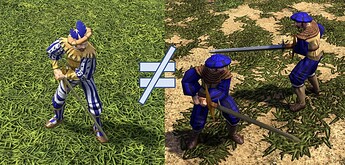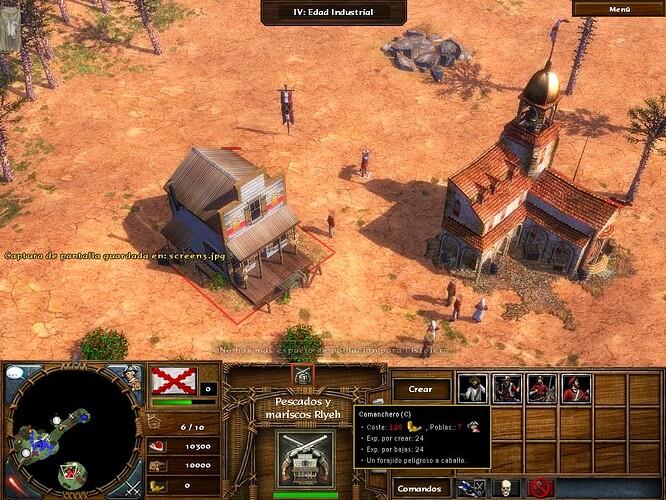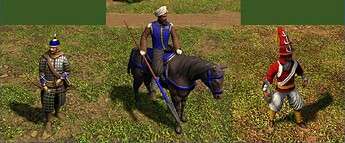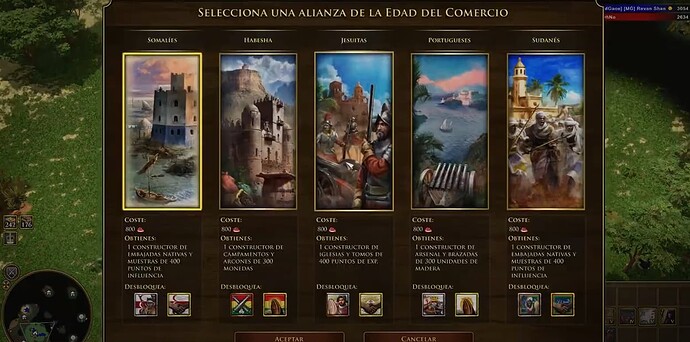It is true, in the Vanilla Version, the majority of mercenaries were around the years 1400-1700, and more or less they were the mercenaries who participated in the Italian Wars, Protestant Wars, and the 30 Years’ War, as well as others. European wars of the Early Modern Age.
I also agree that what is mercenary and what is not has become chaotic, and since it is an extensive topic, I am going to divide my opinion into parts, since I have an idea of where things started to get complicated:
The German Mercenary Problem: Landsknechts and Doppelsoldier. 2 units to represent the same historical troops? (“Vanilla”)
The first real complication was with Germany: There were 2 German mercenaries that were common as shipments to all civs (Black Riders, Landsknecht), but these were also historically mercenary troops of the Holy Roman Empire, therefore they should also be on the roster normal.
To prevent “Spies, and assassins” from having an extra bonus against normal rooster units, 2 versions of this unit were created: “Doppelsoldier, as a base unit, and Landsknecht, which counts as a mercenary.”
Unfortunately, they did not create the base version of Black Rider, but happily, the card that summons him changes the sending of Uhlans for Black Riders, in vanilla, so in a way you could have your army of German black riders. In the definitive edition, however, these are available at the mercenary location.
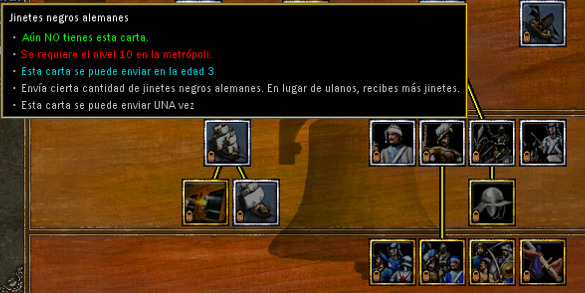
The fact is that although this could have been the exception, it became common that in future expansions, certain units had 2 or 3 versions, especially in Native Civ, which to give different bonuses and subtypes to units that already existed, they were I created another version for rooster (Vanilla Eagle Warrior was Heavy Infantry, Eagle Knight is rank Shock Infantry).
The first Outlaw: Cowboys Feber (Warchief)
Cowbows for everyone: I think things really started to get chaotic since TheWarchiefts, when the “Salons” appeared, and the possibility of building “Cowboys” on Asian maps or in South America. It didn’t make sense, neither aesthetically nor historically: it didn’t look good at all to combine Spaniards with Cowboys, but it was a way to “promote” the expansion and the new campaign, which in some levels of Act II: Shadow you could produce *“American” outlaws * as mercenaries.
The thing was only solved in the Definitive Edition, where the name of the Hall was changed to “Tavern” for the European civ, it was given a varied design by civilization and “ruffians” or outlaw more in line with the civ that built the place or the region of the map in which one plays.
Asian “Mercenaries” (Asian Dinasties).-
Asian “supposed mercenaries”.- The thing is that more than mercenaries, they are “extra units” that did not enter the Common Roster of units for the civ in question, and they only had to introduce them as shipments.
This theory has a sustent if one sees that in the Chinese Campaign, you can create a Consulate with “allies” from India, Japan or China itself and guess what they give: The units that are normally extra per shipment (Ronin, ninja, jet lancer, iron troops, rattan shielder, etc).
At the balance level: Let us remember that European civs generally have 7 human units (archer, pikeman, musketeer, Guerrilla, hussar, dragoon, grenadier) and one or 2 additions or variations; so for the rest of the Native American and Asian civs, perhaps for balance, they also limited their non-siege human units to 6 or 7. For this reason, certain mercenaries or even common troops of the Asian civs (Ninjas, Ratan soldiers, Chakram Throwers) were set to recruit as Trading Post units, or by shipment as mercenaries or allies.
Of course, many of these allies have the advantage that since they count as “natives”, they do not occupy a population, and it is an extra advantage to exceed the maximum number of army units; but hey, it’s a shame that some are only limited to shipping.
I think that at least in India, following Germany’s example in the DE, it should allow mercenaries to be unlocked in the monastery or barracks after summoning them, since many of these are technically “part of the civ”. Until now, only Japanese has its own “consulate isolation option” to recruit ninjas, ronins, etc
Allied African Mercenaries?"
For AoE3:DE, after certain DLC, we now had African civs (Yupiii!). But yeah: given that these civs were already hiring “Allies” as they advanced in age, and the possibility of recruiting mercenaries from these civs (Portuguese: Spingardeiros, India: Elephants, Egypt: Camel with ) What would the port be for?
Well, for the same thing, you receive mercenaries from several of the possible options that you could have chosen when advancing in age, or native African allies from emphasized text"relatively" nearby towns. I’m talking about the Dahomey Amazon just in case.
The USA Port Case: What to do when historically USA didn’t use renaissance mercenaries?
When the American DLC came out, one doubt remained: the United States did not count as a European civ, nor as a native one, and it did not have common European mercenaries, since Landskecht and Black Riders were from a time before the USA itself. What to do? Instead of mercenaries, for the port, the USA acquires shipments of “Settlers” from other civs, which is fun and is actually historically okay.
In addition, they receive allies from “variant versions” of base units, such as grenadiers or dragoons, or from countries of their time, such as Prussia or Hungary.
And what is the current panorama like? (AoE3:DE)
Currently, with so many changes, things look like this:
- All Civs have a port, and this must be used for shipping extra units.
- The European civ receive Shipments of Mercenaries from the port, and 1 Allied Native that does not occupy a population.
- The USA receives immigrants, apart from mercenary allies of the post-Napoleonic modern age.
- Mexico receives native or Spanish allies, and bonuses for its Ouwtlaws.
- Native American civs receive “allies” with units from the same civ, but with an additional bonus.
- The Asian civ receive “allies envoys” from their own country, from units that did not enter the normal roster.
- African civs receive mercenaries from several alliance options as they Age up.
- Owtlaws for “EVERYONE”, but differentiated in the building that produces them (A beverage establishment to hire hitmen and thugs), the proper owtlaws of that civ, as well as zonal units depending on the map or game.
In general, I think there are many things that could be improved in that regard considering how things turned out, but I’ll leave that for another post, i have been writing a lot.
